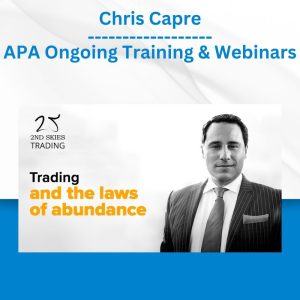*** Proof of Product ***
Exploring the Essential Features of “Noah Miller – ESG Fundamentals – CFI Education”
ESG Fundamentals
Explore the fundamentals of the Environmental, Social, and Governance (ESG) framework.
Overview
ESG Fundamentals Course Overview
Whether you’re in investment banking, commercial banking, private industry, or investment management, you will no doubt be faced with growing interest in ESG. It is crucial to have an understanding of, perspective around, and ability to work with ESG issues to inform financial decision-making.
The intention of this course is to help you develop the critical thinking skills required to work with ESG issues in a variety of ways and in a variety of scenarios.
In this course, we will refresh ourselves on the key concepts from CFI’s Introduction to ESG course, then take a deep dive into systems thinking and the importance of context in ESG.
We will work through the mechanics of a materiality assessment and discuss the material risks and opportunities to both internal & external stakeholders.
Finally, we will evaluate the quality of corporate ESG action in a variety of ways and work through an exercise in building our own ESG scorecard using a set of example client directives.
Introduction to ESG Learning Objectives
Upon completing this course, you will be able to:
- Explain key ESG concepts and the considerations for companies & investors.
- Leverage systems thinking to assess materiality across companies and industries.
- Determine risks & opportunities for both internal and external stakeholders.
- Evaluate ESG maturity, the quality of disclosures, and actual performance.
- Learn to build an ESG scorecard using an example company and set of client directives.
Who Should Take This Course?
This ESG Fundamentals course is perfect for any analyst who would like to better understand how a company manages risks and opportunities that shifting market & non-market conditions create in today’s world.
This course works through a materiality assessment and discusses the material risks & opportunities with respect to key stakeholders, which would be useful for beginner and intermediate level research analysts, banking and investment professionals, or business and finance students seeking to gain further insight into ESG.
The exercises and tools explored in this course will also be useful for any business analyst that wishes to advise both private and public market clients on ESG strategies and improved disclosures.
What you’ll learn
- Introduction
Course Introduction
Learning Objectives
Downloadable Materials - Key Concepts: Introduction to ESG Recap
What Is ESG & Why Is It Important?
ESG Factors & Challenges
Underlying Concepts of ESG
Corporate Pressures & Stakeholder Expectations
Key Considerations for Companies & Investors
Interactive Exercise 1 - ESG & Systems Thinking: The Fundamentals
Systems Thinking & Context
Traditional vs. Systems Thinking
Traditional vs. Systems Thinking Examples
Visualizing Systems Thinking
Visualizing Systems Thinking Example
Assessing ESG Performance with Systems Thinking
Systems Thinking & Materiality
Interactive Exercise 2 - Materiality
Breaking Down Materiality
Breaking Down Materiality – Financial Impacts & Risk, Legal, Regulatory, & Policy Drivers
Breaking Down Materiality – Industry Norms, Stakeholder Concerns & Social Trends, Opportunities for Innovation
Interactive Exercise 3
The Material Risks & Opportunities with Stakeholders
Stakeholder Capitalism
The Material Risks & Opportunities with Shareholders
The Material Risks & Opportunities with Employees
The Material Risks & Opportunities with Customers
The Material Risks & Opportunities with Suppliers
The Material Risks & Opportunities with Local Communities
The Material Risks & Opportunities with Government Agencies & Nonprofits
ESG Issues by Industry
Materiality vs. Immateriality
Corporate Responses to Societal Events
Interactive Exercise 4 - Evaluating ESG: Maturity, Disclosure, and Performance
How to Evaluate ESG & Evaluating ESG Maturity
Evaluating Disclosure Quality
Evaluating ESG Performance
Creating an ESG Scorecard
Creating an ESG Scorecard Breakdown
Interactive Exercise 5 - Case Study
Case Study Introduction
Defining Material Issues – Environmental
Defining Material Issues- Social
Defining Material Issues- Governance
Assign Scoring Criteria & Risk Weightings
Summary - Qualified Assessment
Qualified Assessment
This Course is Part of the Following Programs
Why stop here? Expand your skills and show your expertise with the professional, specializations.
Environmental Social, and Governance Specialization
- Skills Learned
ESG Analysis, ESG Integration, ESG Investing, ESG & Business Intelligence - Career Prep
Asset Management, Management Consulting, Business Analyst, Credit Analyst, Corporate Development, Senior Leadership
Please see the full list of alternative group-buy courses available here: https://lunacourse.com/shop/









